Dr. Goldfaden’s Sun Safety Tips
Going into the Summer season there is so much to be excited about – longer days, BBQ’s, Sun, Sand and beach, but it’s also a time where we need to put skin protection on the top of our list. We sat down with Dr. G to understand what being “Sun Safe” really means and also learn about some post-sun skin tips from the king of reversing sun damage.

photo via @graymalin
What are your sun protection recommendations for someone dealing with rosacea?
“The sun is arguably the most common trigger for Rosacea. Rosacea suffers need to be particularly sun smart and practice what I like to call ‘Smart Sun Safety’ or SSS. SSS consists of the use of a physical sunscreen, containing Titanium or Zinc oxide, protective clothing (which includes a hat and sunglasses) and not being exposed to the sun during high-risk hours of the day. When choosing and SPF avoid ingredients such as phalates, sulfates, artificial fragrances, preservatives and mineral oil. A physical sunscreen is always better in my opinion than a chemical one. Chemical sunscreens, due to the nature of having to be absorbed into the skin, can interact and cause irritation, rashes or clogged pores. Dry mists or sprays may be more beneficial for Rosacea suffers as there is no rubbing of skin needed thus possibly aggravating skin and causing more redness and irritation. Post ‘sun care’ is very important for Rosacea suffers also. Look for calming ingredients such as green tea, red tea or chamomile, which target redness, inflammation and irritation while delivering a cooling sensation.”
Sun protection before make-up is one thing, but is it necessary to reapply SPF during the day?
“Reapplying sunscreen throughout the day is crucial to proper sun protection. When in direct sun (at the beach, pool or on a boat), sunscreen should be reapplied every 30-45 minutes. Sunscreen should always be reapplied after swimming even if you have on waterproof sunscreen. A physical sunscreen is always better than a chemical one. Chemical sunscreens, due to the nature of having to be absorbed into the skin, can interact and cause irritation rashes or clogged pores. Another downside to a chemical sunscreen is that the sun has to actually touch and reach the skin, whereas a physical sunscreen is blocking the UV rays from ever touching the skin.”
And if so, what are your recommendations for reapplying sun protection after make-up?
“A dry mist or spray will allow over and after makeup coverage without messing up makeup and adding bacteria from the fingers to the skin.”
Are there any products outside of an SPF that we should be using to prevent against harmful UVA/UVB rays?
“The use of potent anti-oxidants have been proven to fight against free-radical damage (from UVA/UVB rays and environmental stressors) that break down skin cells and cause premature aging. Using a potent-packed anti-oxidant rich daily serum is equally as important as SPF to ensure that you are protecting the skin on multiple levels.”
What are three routine related things people should do/no do before visiting a clinic for a treatment – specifically to reverse sun damage (pigmentation/dehydration)? And why? (ie: are there ingredients they should avoid, medications, drinking water etc.)
Do not exfoliate, use peels or Retinoid type products the night before or morning of the facial, especially if you tend to be sensitive. A reputable spa will usually request paperwork be filled out listing any medications being taken or applied topically. The aesthetician should ask you if you’re taking medications or using Retin-A or retinoid products. Since Retinoids are aggressive they do not mix well with ingredients like Glycolic and Vitamin C to name a few. Some skin types can handle it but most will be irritated, so why take the chance.
Why is exfoliation important for maintaining healthy, youthful skin?
“Exfoliation is extremely important. The removal of dead skin cells will make skin look younger, tighter and absorb treatment products better.”
What does ‘un-exfoliated’ skin look like?
“I always use the example of an unpeeled onion. Before an onion is peeled or skin is exfoliated it appears dry, crackly, dull and lackluster. Un-exfoliated skin can look rough, uneven and have dark spots, as there is a build up of dead skin cells, dirt and bacteria.”
What are some mistakes people make when it comes to exfoliating?
“Over exfoliation is a common mistake people tend to make. Over exfoliation can occur from overuse (too many days in a row), too harsh of an acid for specific skin types (sensitive skin does better with Lactic acid as opposed to Glycolic), scrubbing too hard, or mixing too many exfoliation ingredients at once (don’t scrub and peel together). Over exfoliation can also happen if skin is already dry, sunburned, wind burned or during seasonal changes.”
What are your top recommendations for exfoliating at home?
“Exfoliate skin two to three times a week, unless you suffer from rosacea or eczema. Depending on the season and climate, exfoliation can be increased or decreased. Both physical and chemical exfoliation is recommended but never on the same day. Rosacea and Eczema suffers should use chemical exfoliators and gentle gel based cleansers.”
What is the best way to treat a sun burn?
“While skin is still damp, use a gentle moisturizing lotion (but not petroleum or oil-based ointments, which may trap the heat and make the burn worse). Repeat to keep burned or peeling skin moist over the next few days. The use of an anti-inflammatory serum is also recommended – look for ingredients like aloe vera, red/green/black tea and Vitamin E as it helps to soothe aggravated skin and reduce redness.”
What is one surprising complexion cures you’ve learned on the job?
“I’ve been in practice for over 40 years and one cure I always recommend and go back to is a cold compress. Cold compresses relieve issues related to sunburn, bug bites, redness, itchiness, inflammation and can be made anywhere. Sometimes simple and natural is the best.”



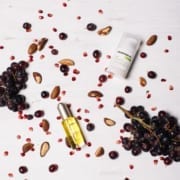
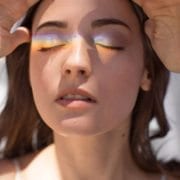
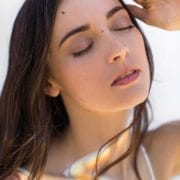
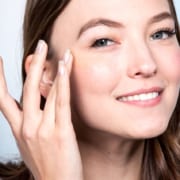
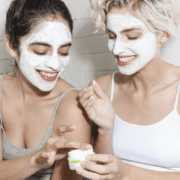
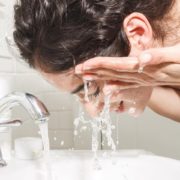
Leave a Reply
Want to join the discussion?Feel free to contribute!